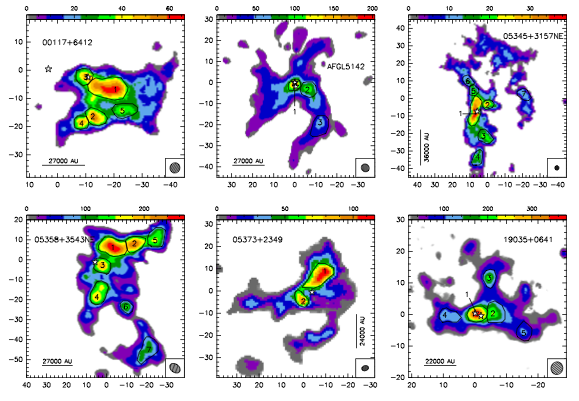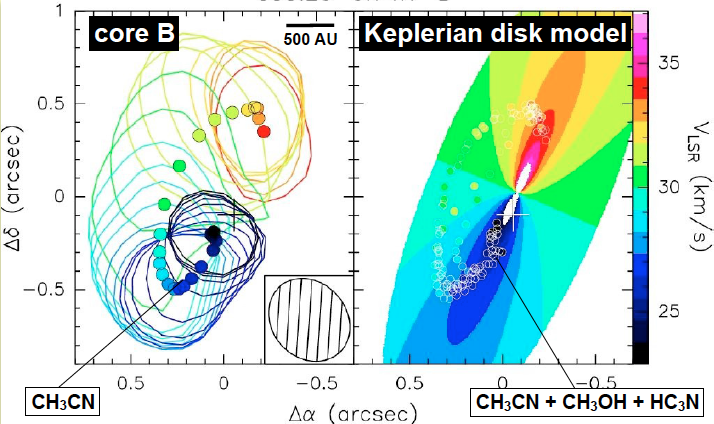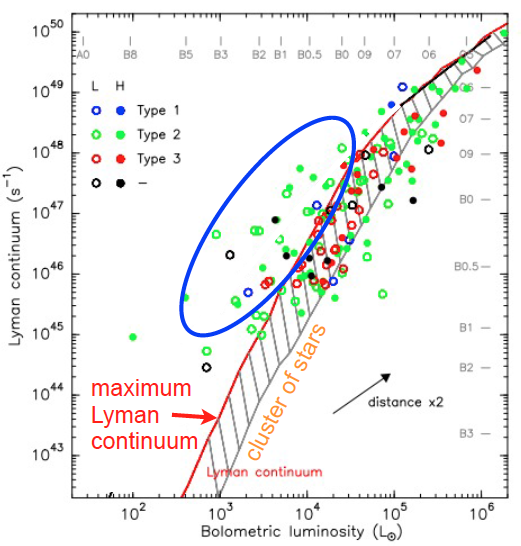Understanding the formation and evolution of the most massive stars
My research focuses on the study of the formation of high-mass stars, by combining observations at different wavelengths (from infrared to millimeter and centimeter wavelengths) with theoretical models. In the following, I present the projects I am currently working on and some highlights of previous projects.
Initial conditions
|
NH3(1,1) integrated intensity maps in units of mJy km/s. Black thick lines show the dense cores identified in each region, and star symbols the ionized gas sources. Read more in Sánchez-Monge et al. 2013, MNRAS, 432, 3288 |
Circumstellar disks
|
Circumbinary Keplerian disk candidate towards G35.20-0.74 N core B. The observed velocity field (left panel, and dots in right panel) is overlaid on the best Keplerian disk model (colour image in right panel). Read more in Sánchez-Monge et al. 2013, A&A, 552, L10 |
Molecular outflows and jets
|
Velocity, with respect to the systemic velocity, against the SiO(5-4)/SiO(2-1) line ratio, normalized with the line ratio measured at systemic velocities. Blue and red circles correspond to the blue- and red-shifted SiO emission. Stars indicate the mean value at each velocity. Line ratio, therefore, the excitation conditions of the outflows, change with the velocity of the outflowing gas. Read more in Sánchez-Monge et al. 2013, A&A, 557, A94 |
HII regions
|
Lyman continuum as a function of the bolometric luminosity for a sample of 200 HII regions at different evolutionary stages (from Type 1 to Type 3). A number of HII regions show an excess of Lyman continuum excess. Read more in Sánchez-Monge et al. 2013, A&A, 550, A21 |




